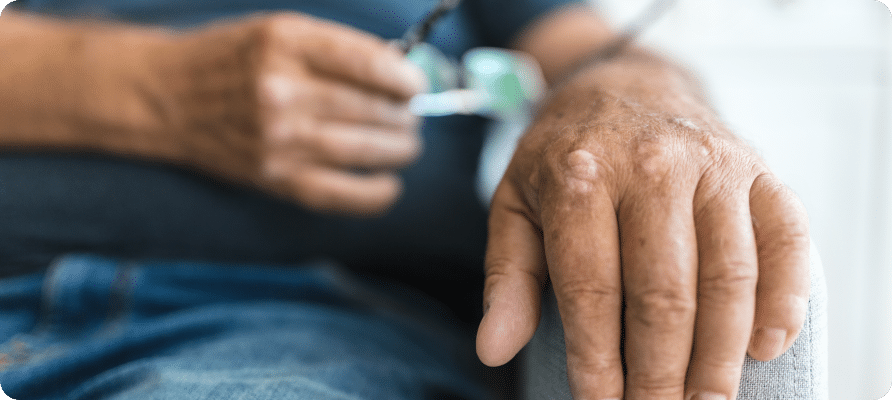Understanding Chronic Wounds
Chronic wounds are wounds that fail to proceed through the normal stages of healing in a timely manner, often remaining open and unhealed for more than three months. These wounds can arise from various underlying conditions such as diabetes, vascular diseases, pressure ulcers, or prolonged immobility. Managing chronic wounds requires a comprehensive and multidisciplinary approach to address the underlying causes, promote healing, and prevent complications.

Types of Chronic Wounds
Chronic wounds can be categorized into several types based on their etiology:
- Diabetic Ulcers: Often found on the feet, these ulcers are a result of poor circulation and neuropathy associated with diabetes.
- Venous Stasis Ulcers: Typically located on the lower legs, these ulcers are caused by chronic venous insufficiency.
- Pressure Ulcers: Also known as bedsores, these occur due to prolonged pressure on the skin, commonly affecting immobile patients.
- Arterial Ulcers: Caused by poor blood flow due to arterial blockages, these ulcers often appear on the lower extremities.
Comprehensive Care for Chronic Wounds
Managing chronic wounds effectively involves a multifaceted approach that includes wound assessment, appropriate treatment strategies, patient education, and ongoing monitoring. Here are key steps in managing chronic wounds:
1. Seek Professional Care
Consult with a wound care specialist who can provide a comprehensive assessment and develop a personalized treatment plan. Regular check-ups are crucial for monitoring the wound’s progress and adjusting the treatment as needed.
2. Clean the Wound Properly
Keeping the wound clean is essential to prevent infection and promote healing. Follow these steps:
- Wash Your Hands: Always wash your hands thoroughly before and after touching the wound.
- Clean the Wound: Use saline solution or mild soap and water to gently clean the wound. Avoid harsh chemicals or antiseptics that can irritate the skin.
- Pat Dry: Gently pat the area dry with a clean towel or gauze.
3. Use Appropriate Dressings
Selecting the right dressing helps maintain a moist environment, protect the wound, and promote healing. Common types of dressings include:
- Hydrocolloids: Maintain a moist environment and protect against contamination.
- Hydrogels: Provide moisture to dry wounds and promote autolytic debridement.
- Foam Dressings: Absorb excess exudate while keeping the wound moist.
- Alginate Dressings: Highly absorbent dressings ideal for wounds with heavy exudate.
Change dressings as directed by your healthcare provider and keep an eye on any signs of infection.
4. Manage Pain
Chronic wounds can be painful. Work with your healthcare provider to develop an effective pain management plan, which may include over-the-counter pain relievers, prescription medications, or topical analgesics.
5. Prevent Infection
Infection is a significant risk with chronic wounds. Signs of infection include increased redness, warmth, swelling, pus, and fever. To prevent infection:
- Follow Proper Hygiene: Keep the wound and surrounding skin clean.
- Use Antibiotics:
- Monitor the Wound: Regularly check for signs of infection and seek medical attention if you notice any.
6. Optimize Nutrition
Good nutrition is vital for wound healing. Ensure your diet includes:
- Protein: Essential for tissue repair and regeneration.
- Vitamins and Minerals: Particularly vitamins A, C, and E, and minerals like zinc, which are crucial for skin health and healing.
- Hydration: Drink plenty of water to keep your body hydrated and support overall health.
7. Control Underlying Conditions
Managing underlying conditions that contribute to chronic wounds is critical. This may involve:
- Diabetes Management: Keep blood sugar levels under control through diet, medication, and monitoring.
- Improving Circulation: Use compression therapy for venous ulcers or medications to improve blood flow.
- Pressure Relief: Regularly change positions and use specialized mattresses or cushions to relieve pressure and prevent pressure ulcers.
8. Stay Active
Physical activity can improve circulation and overall health, promoting faster wound healing. Consult with your healthcare provider to develop a safe and appropriate exercise plan.
9. Avoid Smoking and Alcohol
Smoking and excessive alcohol consumption can impair circulation and slow down the healing process. Avoid these habits to enhance your recovery.
When to Seek Help
- Increased pain or swelling
- Red streaks spreading from the wound
- Persistent fever or chills
- Significant increase in drainage or pus
- Any signs of worsening condition
Conclusion
Managing chronic wounds requires a multifaceted approach involving proper wound care, lifestyle changes, and regular medical supervision. By following these guidelines and working closely with your healthcare provider, you can promote healing, prevent complications, and improve your quality of life. If you have any concerns or questions about your wound care regimen, do not hesitate to reach out to MetaCure team for support and guidance.
